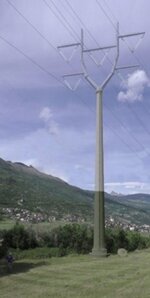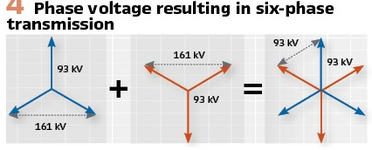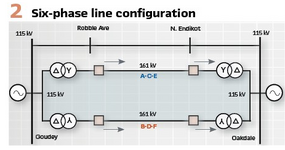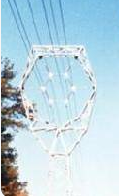I've recently been building out different geometries in SKM Enhanced Transmission Line Model tool and have been tracking varying reactance values shown below in ohms per mile. For our application we have a 230kv line that travels for a distance of about 11 miles and I'm wondering if anyone knows of any other configurations that may be able to help cut down on the reactance. We are considering option 3A or 3B at this time. Thanks!
1A: H frame single circuit - 0.05443 + j0.76244
1B: H frame (bundled) single circuit - 0.02723 + j0.59044
2A: Single Circuit on Monopole with 2 phases on one side, third phase on the other - 0.05442 + j0.76556
2B: Single Circuit (bundled) on Monopole with 2 phases on one side, third phase on the other - 0.02722 + j0.59363
3A: Single Circuit but split between two sets of conductors, each on a separate side of the pole - 0.02720 + j0.34576
3B: Single Circuit but split between two sets of conductors, each on a separate side of the pole but bundled - 0.01360 + j0.25999
1A: H frame single circuit - 0.05443 + j0.76244
1B: H frame (bundled) single circuit - 0.02723 + j0.59044
2A: Single Circuit on Monopole with 2 phases on one side, third phase on the other - 0.05442 + j0.76556
2B: Single Circuit (bundled) on Monopole with 2 phases on one side, third phase on the other - 0.02722 + j0.59363
3A: Single Circuit but split between two sets of conductors, each on a separate side of the pole - 0.02720 + j0.34576
3B: Single Circuit but split between two sets of conductors, each on a separate side of the pole but bundled - 0.01360 + j0.25999





